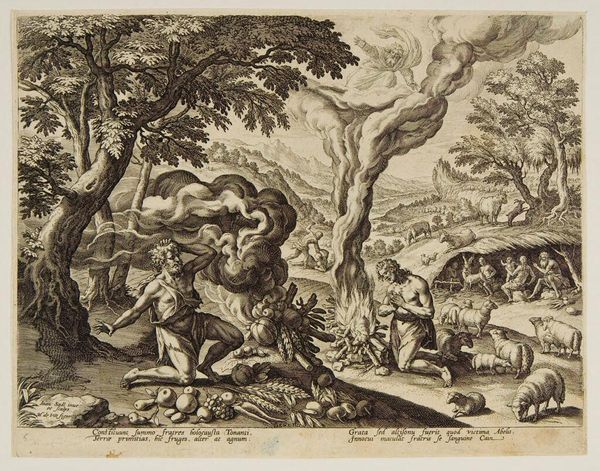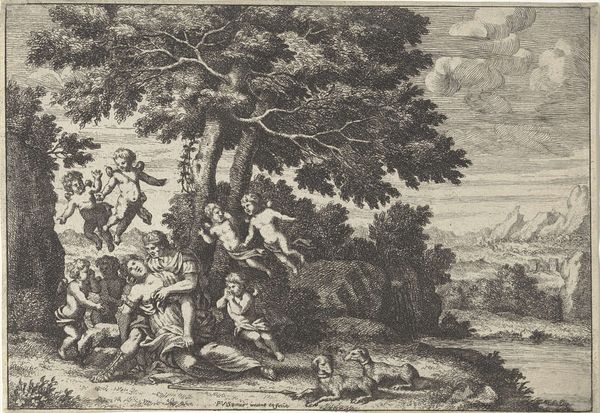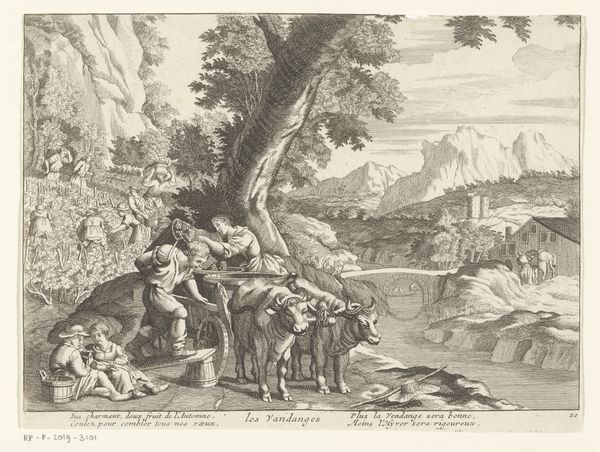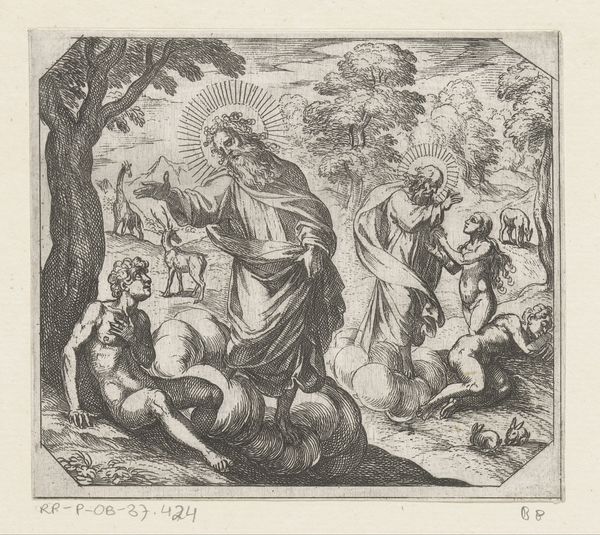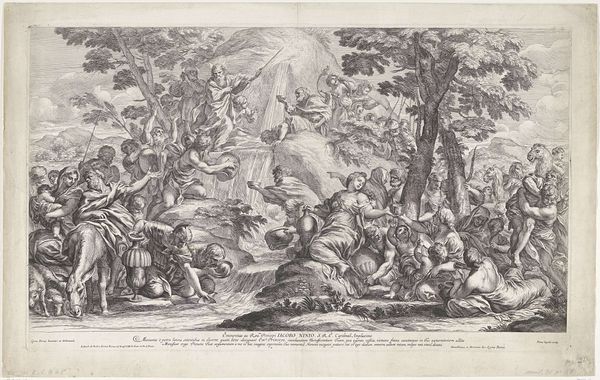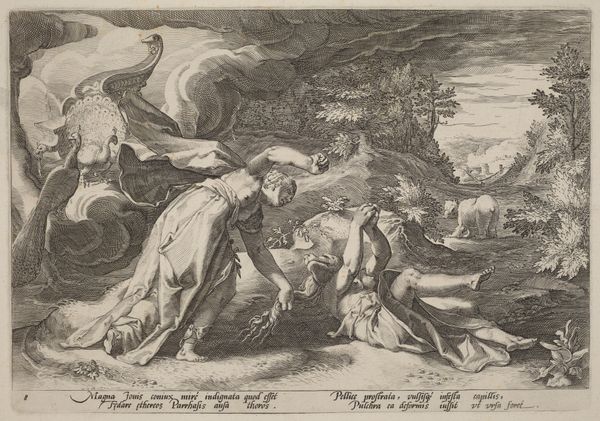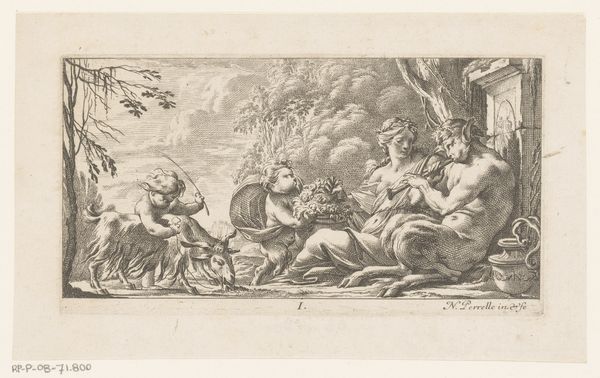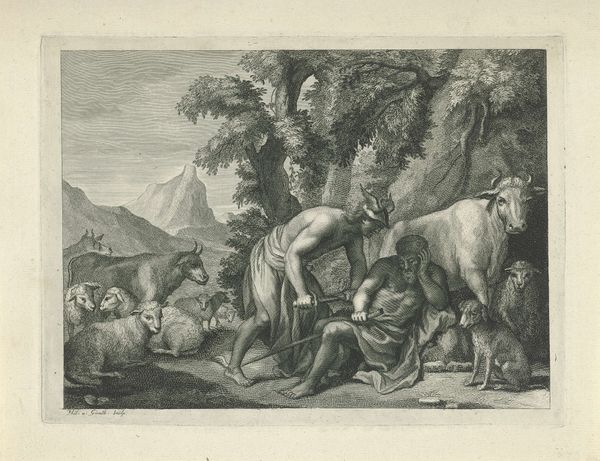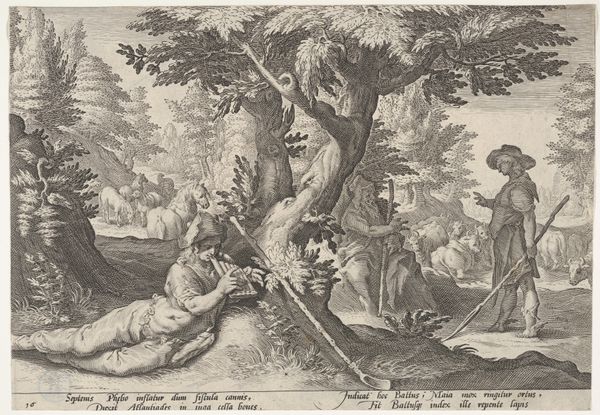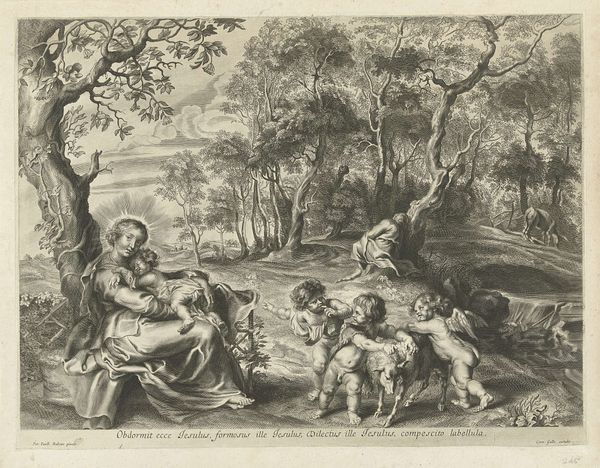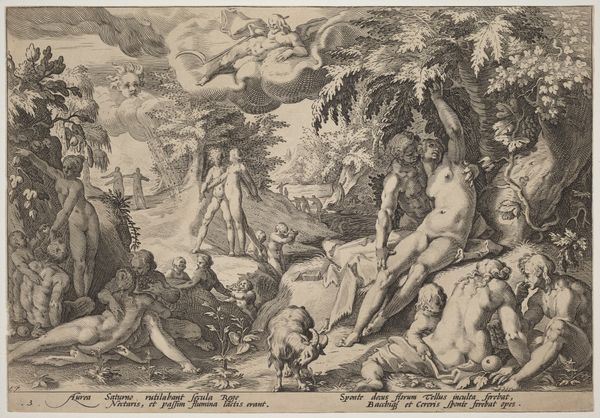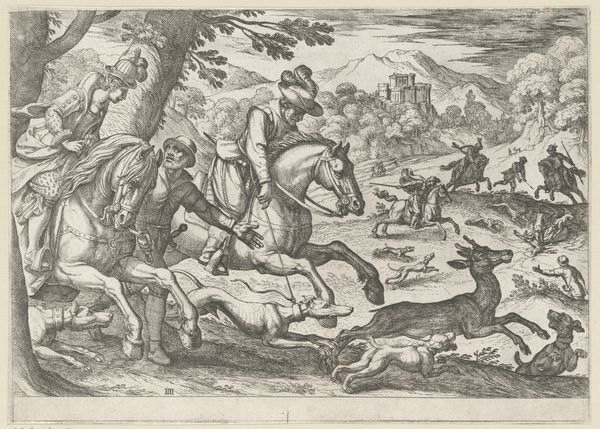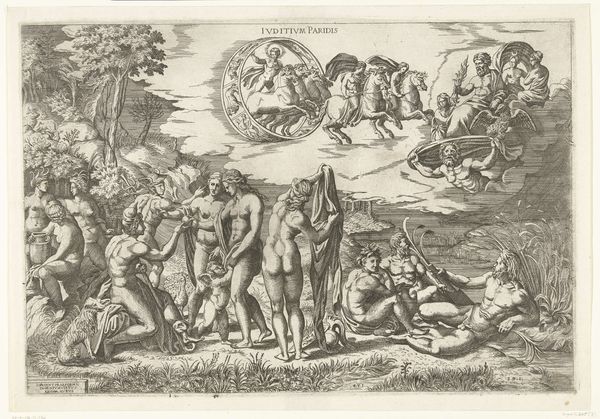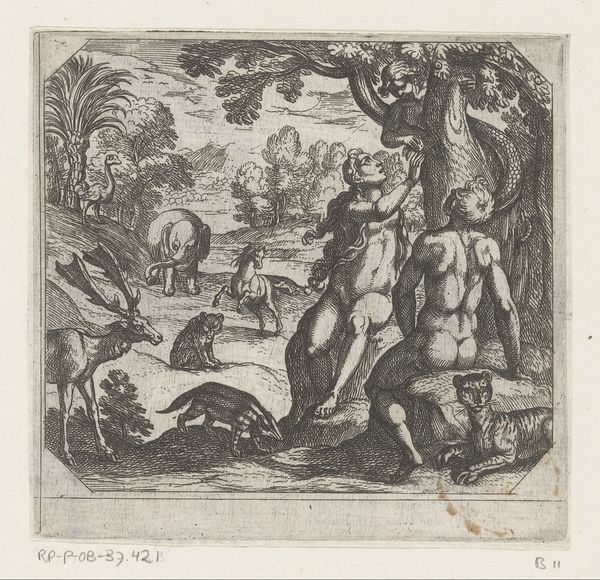
Dimensions: height 205 mm, width 258 mm
Copyright: Rijks Museum: Open Domain
Curator: Welcome to the Rijksmuseum. Today, we’re observing Johann Sadeler I's 1583 engraving, "Offers van Kaïn en Abel," or "Offers of Cain and Abel." Editor: It’s a remarkably bleak visual. The stark contrast between light and shadow casts a rather sinister aura over the scene. Look how Cain recoils! Curator: Indeed, Sadeler uses chiaroscuro to highlight the psychological turmoil. Consider, though, the symbolic weight of the smoke rising—accepted from Abel, but rejected from Cain, embodying divine judgment. These pictorial decisions speak to themes of good versus evil, innocence versus guilt. Editor: The composition further enhances this contrast. On one side, the bucolic landscape with its plump livestock near Abel and his cave community—representing pastoral innocence and familial harmony. Then, on the other, Cain sits in relative darkness and his sacrifice looks like an afterthought next to Abel’s burning lamb. It feels as if there is no visual harmony between the two brothers. Curator: Notice also that the material choices tell us volumes. The sheep accepted and representing innocence contrasted to the spilled wheat grains and discarded gourds are telling us a lot about the brothers. What has each dedicated his efforts to? In essence, they define them. Editor: I’m also struck by the texture achieved through the engraving. Those minute, meticulously placed lines create depth and realism that’s surprising. However, the expressions don't match that intensity, which is quite off-putting. Curator: The expressions are standardized in depictions like this, aren’t they? More crucial is considering the cultural memory this scene evokes. For early viewers, steeped in religious narratives, it would be a stark warning about the dangers of envy and unchecked rage, and pleasing god. Editor: Still, if one only examined its elements individually, then recombined them, one would only be marginally moved as a viewer. What could make up the distance from the scene is only the implied story that supports this tableau. Without knowledge of the "narrative scaffolding" supporting the arrangement of lines on the plate, little value may be added. Curator: Precisely! Seeing isn't simply believing; it's connecting to a cultural narrative. Thanks for joining me today. Editor: My pleasure, until the next encounter with aesthetic storytelling.
Comments
No comments
Be the first to comment and join the conversation on the ultimate creative platform.
